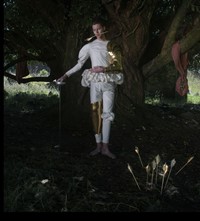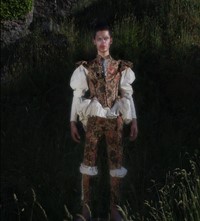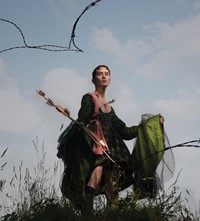Another Man speaks to Flint James McDonald, the emerging designer celebrating the creative scene in Glasgow and beyond
- TextHannah Tindle
Up Next is a new column taking a closer look at some of fashion’s rising stars.
Name/Brand: Flint James McDonald
Location: Glasgow, Scotland
Alma Mater: Glasgow School of Art
USP: Scottish heritage meets gender politics via clothes that are rigorously hand-crafted
Instagram: @flintjmcdonald
Flint James McDonald, who recently graduated from Glasgow School of Art’s BA Fashion Design course, never intended for their Scottish heritage to play such an integral role in their final collection. But, considering that McDonald was born and raised there – a descendant of the MacDonald clan who was infamously massacred at Glen Coe in 1692 – it ended up as a source of inspiration that was impossible to ignore. “I also have Lamont clan blood in me,” says McDonald, who has now settled in Glasgow, where they work as a fashion technician at the university. “There was another massacre of Lamont people in my hometown of Dunoon by the Campbell clan, who also killed MacDonalds at Glen Coe,” they continue.
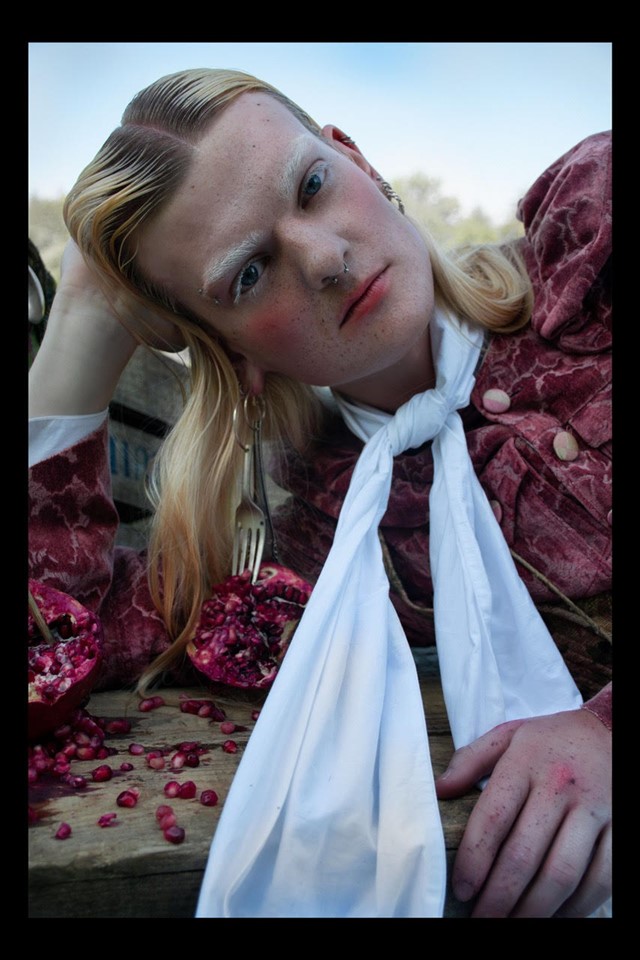
With such a fascinating albeit macabre familial history, it was a castle ruin in Dunoon – a small town on the west coast of Scotland – that McDonald chose as the location to shoot their graduate work over the course of three days, collaborating with photographers Furmaan Ahmed and Vasso Vu. “I always visited it when I was younger,” they say. “Almost everyone in the shoot, minus a few individuals, are queer and non-binary creatives from both Glasgow and London. We all stayed in my little house with my brother who drove us all around, bless him, and my mother – it was a big family affair.”
“Almost everyone in the shoot, minus a few individuals, are queer and non-binary creatives from both Glasgow and London” – Flint James McDonald
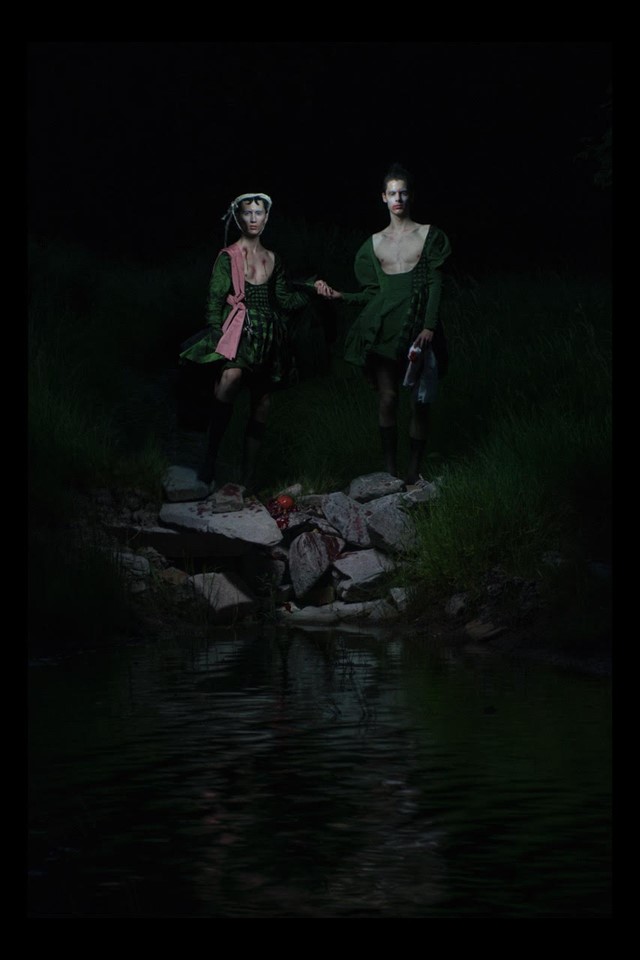
McDonald is particularly interested in how antiquated codes of dress can be re-interpreted in a contemporary context. “I’m very inspired by history and acknowledging how it can play a part in modern life,” they say. “Particularly clothing and its relation to gender.” As such, McDonald utilises sumptuous fabrics in their work, creating weighty garments that look as though they have jumped straight out of an old master’s painting and onto bodies that reject prescribed gender norms.
“I worked with velvets, corduroy, taffetas, silks for the collection,” they explain. “I got ribbons and made my own gingham, so that’s all stitched down... And then the big green coat. That bloody coat,” they laugh, when speaking of the ruffled overcoat worn by a redheaded model called Ben, wielding a branch that has been set alight. “That was made from over 40 metres of corduroy,” they continue. “I went to Paris with my friends to buy it, then carried this roll of fabric back on the Eurostar to London, brought it back up to Glasgow and then I dyed it all in three meters at a time in my washing machine at home!”
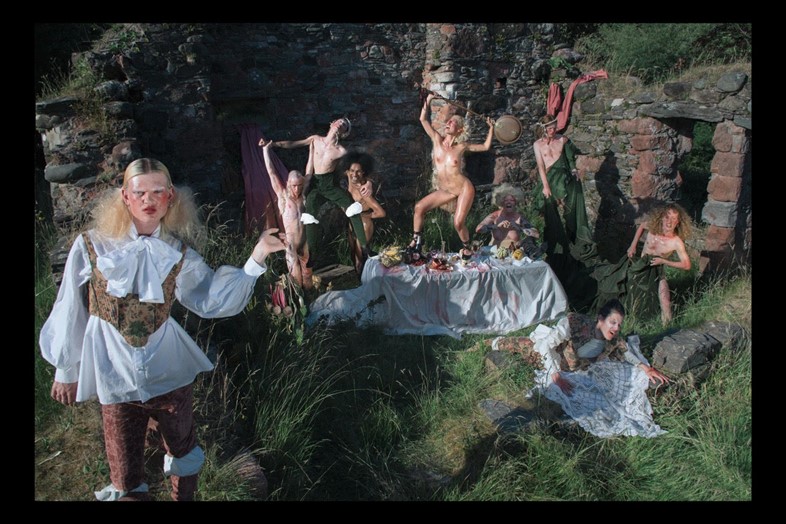
Such a rigorous approach to making clothes is no doubt a product of their equally thorough tutelage (the undergraduate fashion course at Glasgow School of Art is made up of just ten students, as opposed to the hundreds attending institutions such as Central Saint Martins or London College of Fashion). “I also love pattern cutting,” they say, a technical skill which is rarely considered a compulsory part of teaching on London fashion degrees. “It is my favourite thing to do ever. I love the challenge of taking a two-dimensional idea – a drawing or a collage – and making it come to life. I just find that so magical.”
“I love the challenge of taking a two-dimensional idea – a drawing or a collage – and making it come to life. I just find that so magical” – Flint James McDonald
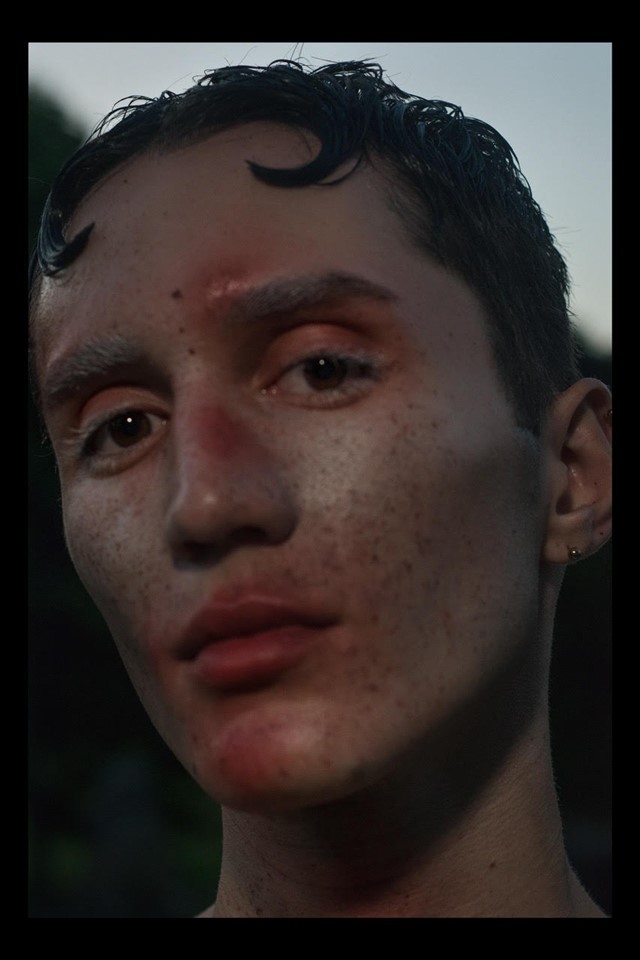
Scotland already boasts a thriving art scene, with the likes of the Glasgow International Biennale, GoMA and smaller independent galleries in the city (such as The Modern Institute and Mary Mary) putting it firmly on the map. “The art scene in Glasgow is amazing,” McDonald concurs. “I think fashion... Maybe not so much. London is considered the hub, but there are other places out there. To be honest, I will probably move to London eventually. But Glasgow is such an inspiring place.” Despite two devastating fires – one in 2014 and another in June this year – it’s going to take a lot more to defeat the Glasgow School of Art and the talent that emerges from its walls. Fashion would do well to extend its radar northward; Flint James McDonald proves it.
